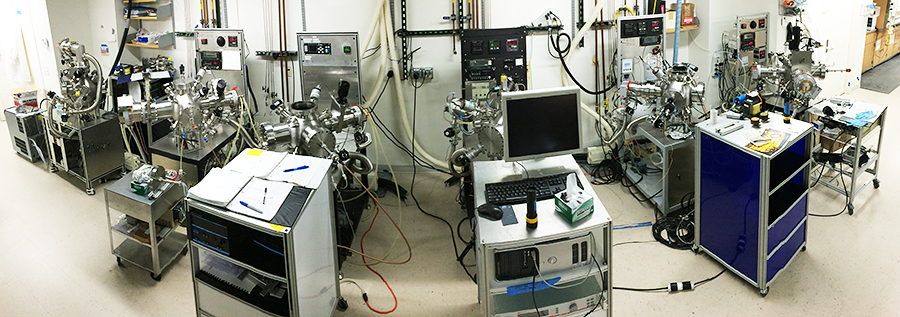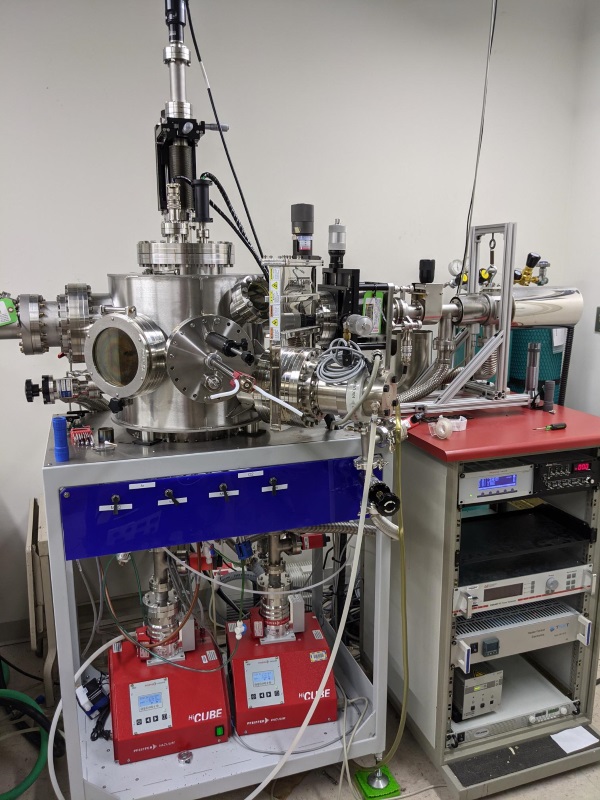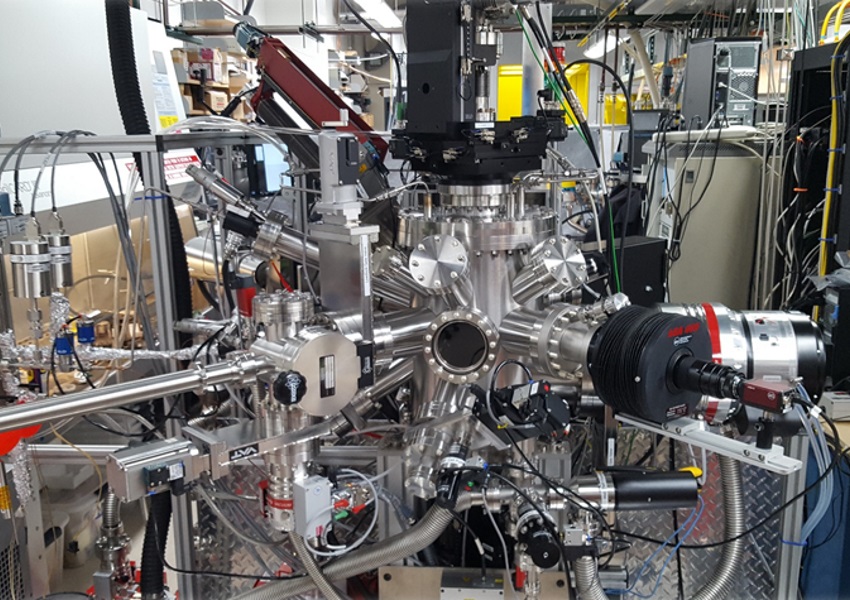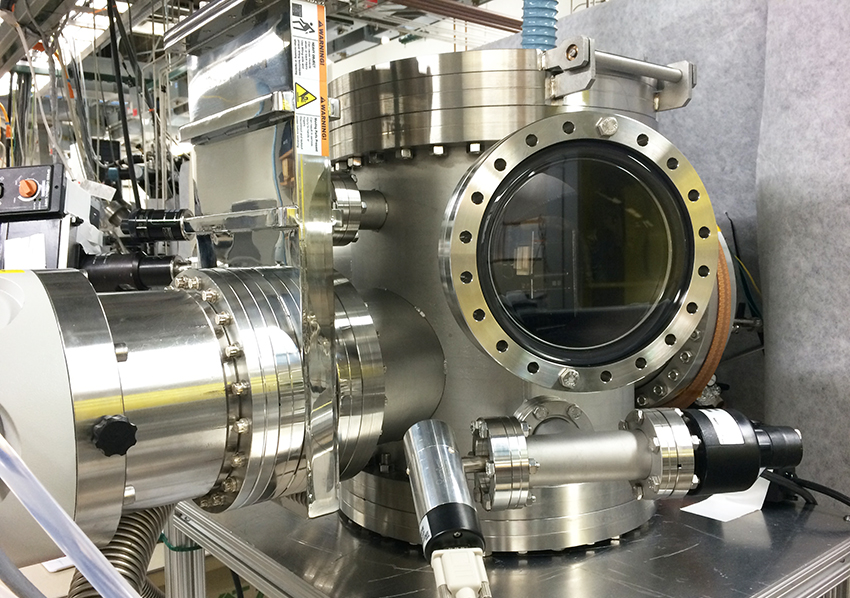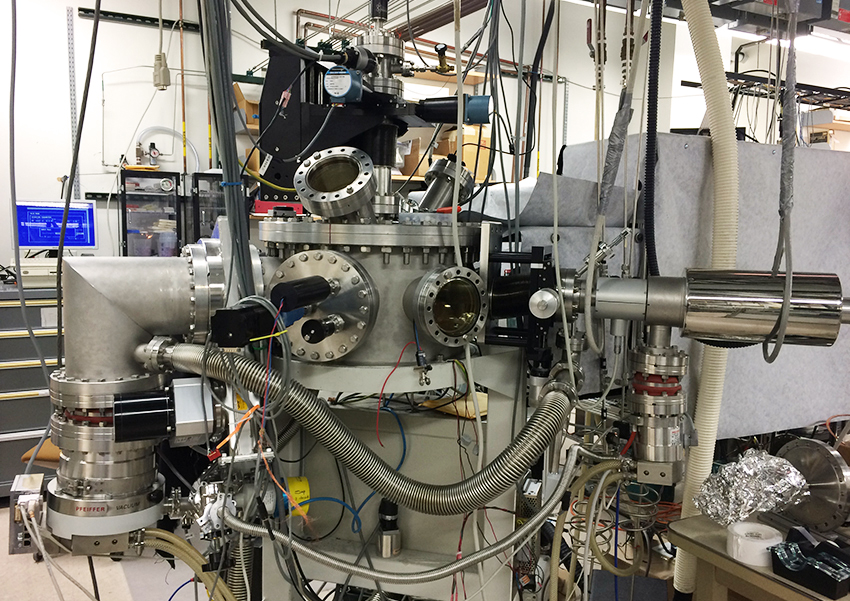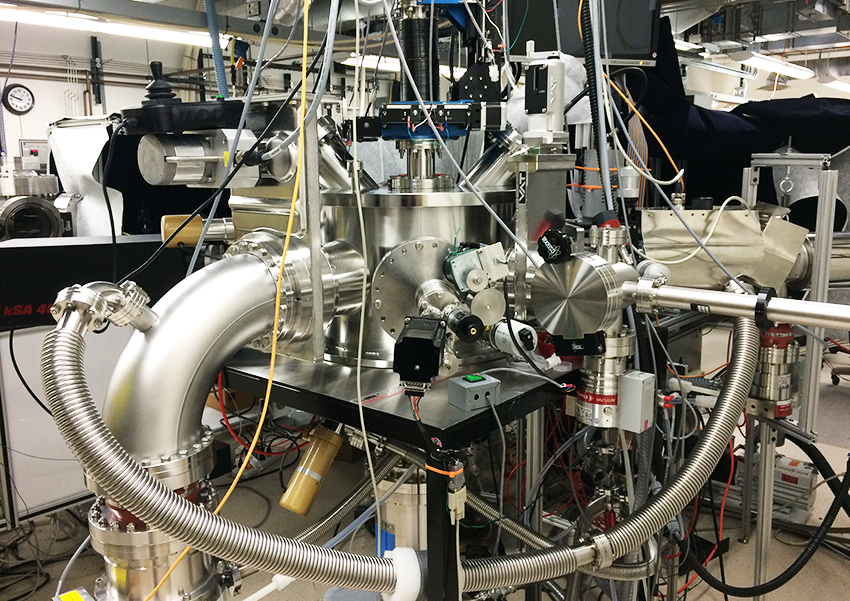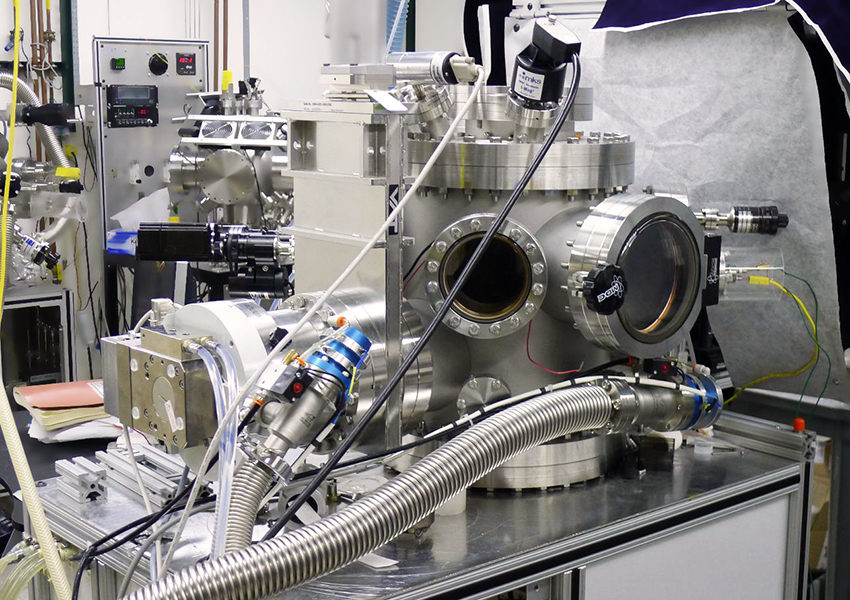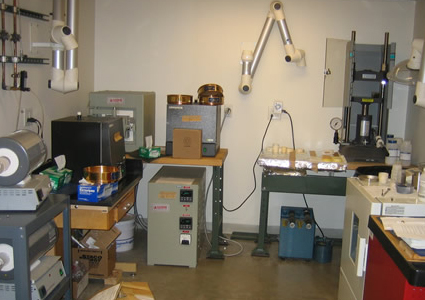Growth and Fabrication
|
|||
|
|
Growth: Metal-Organic Pulsed Laser Deposition (MOPLD) Iterating on the recent advancedments in Hybrid PLD, our group has developed the first chambers that combine PLD and MOCVD. A precursor gas is used to supply a flux of A-site or B-site atoms and due to the absorption control behavior of the precursor gas, a growth window is available in which perfect stoichiometry is possible.
|
|
Growth: Pulse Laser Deposition (PLD) PLD chambers are split between two seperate 248nm laser beamlines powered by Coherent LPXpro 305 lasers each with an output power of up to 40 Watts (50 hz, 1100 mJ), which is high enough to instantly excite any material in our PLD chambers into a plasma state.
|
|
|
|
